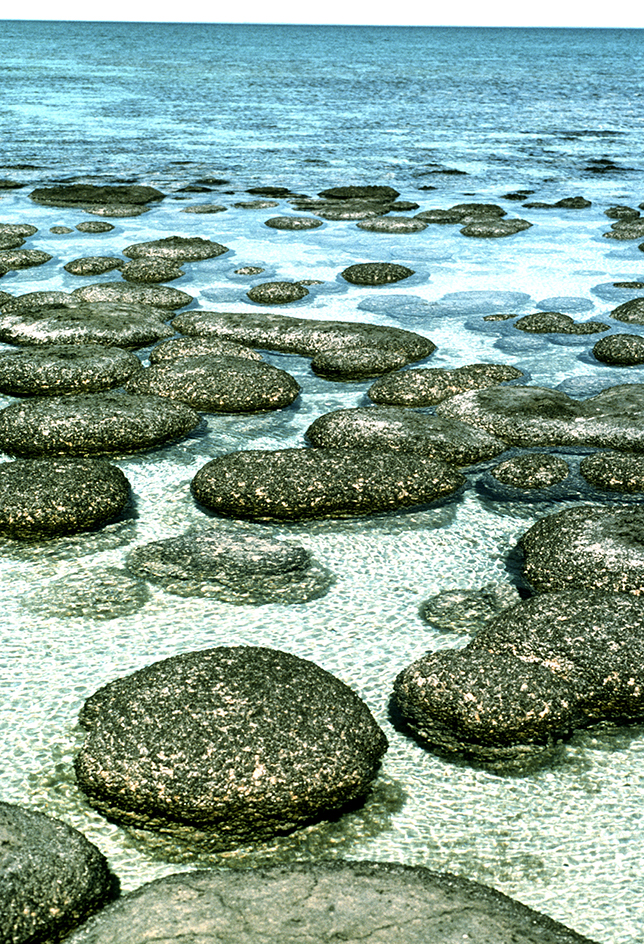Stromatolite, << stroh MAT uh lyt, >> is a reeflike mound of rock created by a community of microbes. A stromatolite grows as the microbes deposit successive layers of sediment, tiny bits of rock, sand, and dirt carried by water. Stromatolites rank among the oldest known fossils. Earth scientists have found fossilized stromatolites in deposits of chert formed about 31/2 billion years ago. Today, stromatolites grow in warm, shallow, salty waters in western Australia, the Bahamas, and a few other locations. The term stromatolite comes from Greek words meaning bed or layer and rock.

Stromatolites form mainly through the action of microbes called cyanobacteria. These simple one-celled organisms use energy from sunlight to make food through a process called photosynthesis. Cyanobacteria secrete a slime that helps them move around and stick together in dense mats. In shallow waters, sediment carried by waves and currents can become trapped in the slime. As the cyanobacteria undergo photosynthesis, they cause calcite and other minerals to precipitate (separate from the water). These minerals cement the sediment together, forming a thin layer of rock. The microbes move to the surface of the rock layer and the process repeats, eventually building up a large, hard, dome-shaped mound.
Stromatolites played an important role in the early development of life on Earth. Earth scientists have discovered characteristic stromatolite layers in rocks formed more than 3 billion years ago, during a time called the Archean Eon. At the time, Earth’s atmosphere included little oxygen. Stromatolites formed huge reefs in the shallow oceans of the world. Earth scientists think that these reefs released large amounts of oxygen into the atmosphere as a by-product of photosynthesis. Many believe that the introduction of plentiful oxygen eventually enabled more complex life forms to develop.
